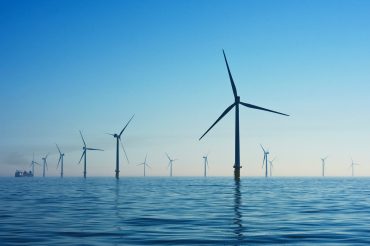
- Energy
- Green Tech
New Control System Boosts Offshore Wind Farm Stability
3 minute read

Advanced Grid-Forming Technology Enhances Wind Farm Performance and Network Integration
Key Facts
- Novel control methods enhance interoperability of grid-forming converters in offshore wind farms
- Frequency-power reference droop-based feedback control improves system stability
- Technology applies across wind power plants, HVDC converters, and battery storage systems
Introduction
Offshore wind energy systems are undergoing significant technological transformation with breakthrough developments in grid-forming converter technology. These advancements address critical challenges in power system stability and interoperability, particularly in weak AC network environments where independently designed converters must work in harmony.
Key Developments
The integration of grid-forming (GFM) converters represents a major step forward in offshore wind technology. A new frequency-power reference control method effectively manages power and frequency oscillations during both steady-state and transient operations. This innovation builds upon existing virtual synchronous machines (VSM) and PI-controller-based power control systems.
The control structure’s universal applicability extends its benefits across multiple applications, including offshore wind power plants, GFM-HVDC converters, and battery energy storage systems. This versatility marks a significant advancement in renewable energy infrastructure.
Market Impact
The enhanced interoperability of grid-connected GFM converters strengthens the reliability of offshore wind farms. These improvements directly address industry concerns about power stability in weak-grid conditions, making offshore wind more viable for large-scale energy production.
System operators and wind farm developers can now implement more robust control mechanisms, reducing the risk of power oscillations and improving overall grid stability.
Strategic Insights
The development of PLL-Reinforced Damping technology proves particularly valuable for managing stability during grid frequency fluctuations. This advancement supports consistent operations in challenging weak-grid conditions, a crucial factor for expanding offshore wind deployment.
Expert Opinions and Data
Industry experts emphasize the importance of standardized terminology and enhanced stability protocols in non-rated frequency scenarios. The research community continues to refine these technologies, as documented in the WES discussion paper.
Technical analyses demonstrate improved performance metrics in both steady-state and fault conditions, validating the effectiveness of the new control methods. These findings support the broader adoption of advanced converter technologies in offshore wind applications.
Conclusion
The advancement of converter interoperability technology marks a significant step forward for offshore wind energy systems. These improvements in control methods and system stability strengthen the foundation for reliable renewable energy generation, supporting the continued growth of offshore wind power infrastructure.








